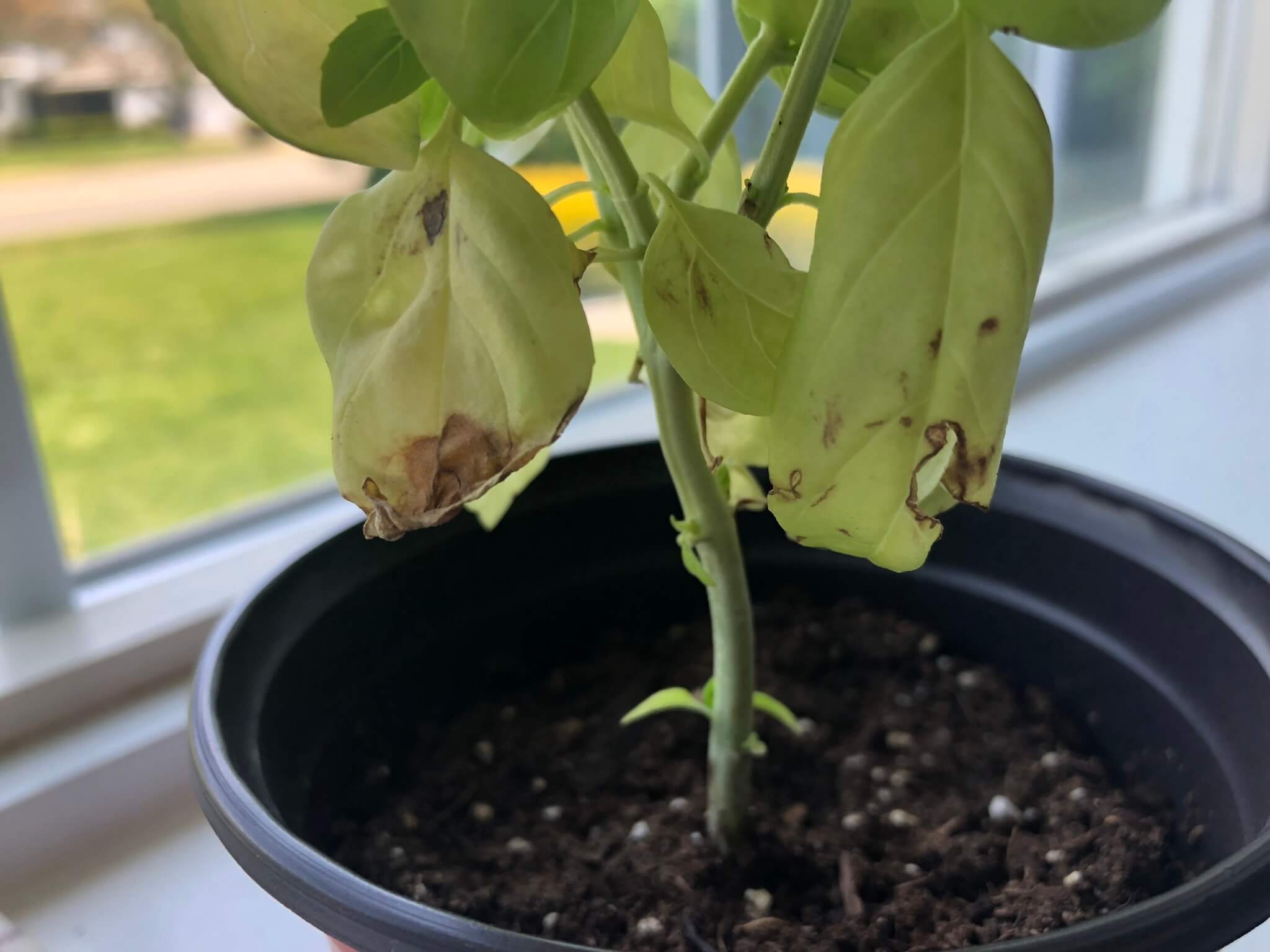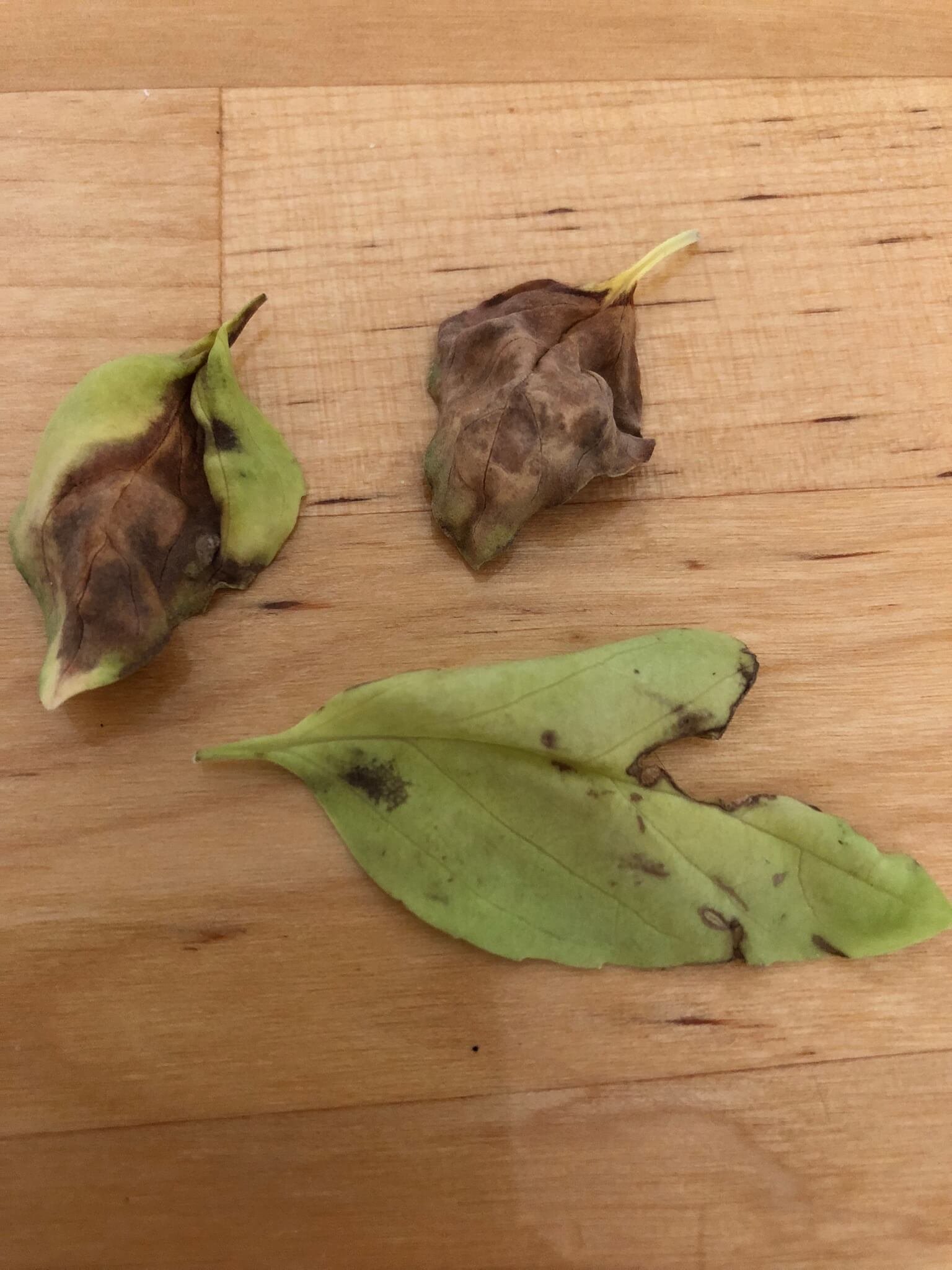Banish the Blight: Conquering Black Spots on Basil
Does your basil have black spots?
Growing your own herbs is a fulfilling pastime that allows you to harvest the freshest ingredients for your favorite dishes.
Among these, basil certainly stands out in both its aromatic properties and versatility in a wide variety of recipes.
Growing basil at home can be a little more difficult as basil can be particular about its growing conditions.
Basil likes warmth, plenty of light, and consistent water.
If your basil isn’t getting the right balance of these things, it may start to develop a black spot on its leaves.
Black spots on basil can be caused by a variety of factors, such as
frost damage
fungal or bacterial infections
nutrient deficiencies
But have no fear! There are steps you can take to help banish the blight and get your basil back on track.
But first, let's identify which factor is causing the dark spots.
The items listed are accompanied by affiliate links, meaning I earn a small commission if a purchase is made through my links. This has no impact on the cost to the consumer. I link to products this way whenever possible, and it has no bearing on the products I choose to review or recommend.
Causes of Black Spots on Basil Leaves
To address black spots on your basil plant, you should start by identifying the possible reasons for them.
Some common causes include:
Frost Damage
Basil is an annual herb that loves heat and humidity. Which can make growing it in certain zones of the country tricky.
I am in Zone 6 and we get frost until Memorial Day weekend and sometimes even beyond that. So basil can be quite tricky here and has a very short growing season.
You can certainly grow basil indoors but that also comes with its challenges too!
If the overnight temperature drops below 50 degrees Fahrenheit, it can cause frost damage to your basil plant, resulting in black spots.
How do you know if the black spots on the basil are due to frost damage or cold weather?
Usually, black spots on the top of the basil plant are a telltale sign. The new leaves on your plant are particularly sensitive to changes in temperature.
You can see the black spots on the edges of the leaves.
Also, look out for black spots that appear at the tips and outside edges of the leaves; this is typically a sign of damage caused by cold weather.
If a basil plant is planted outdoors too soon or if it is left in a cold area overnight or exposed to drafts while indoors, it may experience this issue.
Fungal and Bacterial Infections
Various fungal and bacterial infections can lead to the appearance of black spots on basil plants. The most common infections include Fusarium Wilt, Bacterial Leaf Spot, and Downy Mildew.
Recognizing the symptoms and understanding how these infections affect the plant is crucial for effective prevention and treatment.
Fusarium Wilt
This fungal disease is caused by the pathogen Fusarium oxysporum. Symptoms include root rot, wilted yellow leaves, and eventual plant death.
The fungus invades the plant's vascular system, blocking water and nutrient uptake, ultimately leading to wilting and necrosis.
Early signs to look out for include yellowing of lower leaves, stunted growth, and dark brown streaks on the stems.
These leaves are yellowing, wilting, and developing brown/black spots.
Bacterial Leaf Spot
Caused by the bacterium Pseudomonas cichorii. Initial symptoms include small, water-soaked lesions that eventually turn black.
These spots can be on leaves or stems, and they will enlarge as the disease progresses. The lesions may also have a yellow halo around them.
Downy Mildew
Peronospora belbahrii, the pathogen responsible for Downy Mildew, causes yellowing leaves and the formation of white or gray fungal growth (spores) on the underside of leaves.
As the disease progresses, black lesions develop on the leaf surface, and the plant experiences significant defoliation.
The affected leaves need to be removed from the plant to avoid spreading bacteria and disease.
Basil that has black spots on its leaves due to cold temperatures.
Nutrient Deficiencies
Is your basil plant looking sickly with pale, withering leaves or strange black spots?
These symptoms can indicate nutrient deficiencies. If you over fertilized your basil then the leaves may die and turn brown or black.
Nutrient deficiencies can sometimes be the culprit in black spots on basil but it is less likely.
If you have ruled out other potential reasons, the source of the problem may be this.
Treatment for Black Spots on Basil Plants
Based on the cause of the black spots, you can choose a treatment accordingly.
Treating Black Spots on Basil from Frost Damage
If frost damage is the culprit for black spots on basil, unfortunately, the damage has been done.
The best thing to do is to remove the affected leaves so it doesn’t spread to healthy parts of the plant.
Then move your plant to a sunny and warm location so that it can recover.
Going forward to prevent damage from frost or cold weather, you will need to pay attention to the temperature. If the temperature is forecast to drop below 50℉ take measures to safeguard your basil plants.
If you have outdoor plants, use a frost cloth to cover them and shield them from cold weather.
Also, try to avoid planting your basil outside too early in the season. Basil likes warm temperatures. I know you want that delicious herb but good things come to those who wait.
Meanwhile, ensure that your indoor basil is not exposed to cold drafts from windows or doors overnight.
By taking these simple precautions, you can help prolong the life and health of your basil plants.
Treating Black Spots on Basil from Fungal and Bacterial Infections
The most important thing to do is to remove and dispose of infected leaves. This will help to prevent the disease from spreading.
Also, treat your basil plant with a fungicide or you can make your own with dish soap, water, and baking soda. Apply it to the healthy leaves after removing the black basil leaves.
Proper plant care is essential in preventing these fungal and bacterial infections from attacking your basil plants. Some crucial steps for maintaining healthy basil plants include:
1. Controlled watering: Avoid overwatering your plants, and water at the base rather than the leaves to minimize moisture on leaf surfaces. Wet leaves are more prone to fungal and bacterial infection.
2. Well-drained soil: Ensure you plant basil in well-draining soil to prevent waterlogging, which can promote fungal infection and bacterial growth. Make sure that the pot or container holding the basil has sufficient drainage holes as well.
3. Good air circulation: Space your plants adequately to promote air circulation, reducing humidity levels around the leaves, and discouraging plant disease development.
Pin for later!
Treating Black Spots on Basil from Nutrient Deficiencies
To ensure your basil plant is receiving adequate nutrients, it's vital to properly fertilize it and regulate the pH levels of your soil, which should optimally fall between 6.0-7.0. Ideal soil conditions for basil growth are slightly acidic to neutral.
For individuals who haven't been applying fertilizer to their basil plants, it's advisable to enrich the soil surface using compost or organic nitrogen-rich fertilizer.
Conversely, if you've been consistently using a substantial amount of fertilizer, consider pausing the application for a month to allow your plant to recuperate.
By following these preventive measures and keeping a close eye on your basil plants, you can minimize the risk of basil turning black and enjoy a healthy, thriving herb garden.
RELATED: Basil Companion Plants: the Best and Worst Plants to Grow Nearby
A healthy basil plant that was grown from cuttings.
Tips to Keep Basil Healthy and Happy
If you want to keep your basil healthy follow these tips below.
Sunlight: Basil thrives in full sun, requiring at least 6-8 hours of direct sunlight per day.
Moisture level: Keep the soil consistently moist but not waterlogged. Basil prefers well-draining soil to prevent root rot.
Watering Method: Make sure to water at the base and avoid getting the leaves wet. Watering overhead can lead to water splashing onto the leaves, making them more susceptible to disease.
Proper pruning: Prune your basil regularly to ensure good air circulation which will help prevent the spread of any fungal or bacterial infections. You want to have healthy plants that are full and beautiful, rather than ones that are thin and spindly.
Monitor your basil regularly and take action right away if there are any problems that arise.
With proper care and maintenance, you can expect a bountiful harvest of fresh basil leaves throughout the growing season.
By following these tips and tricks, you'll be well on your way to enjoying healthy, vibrant basil plants without the worry of black spots!



















